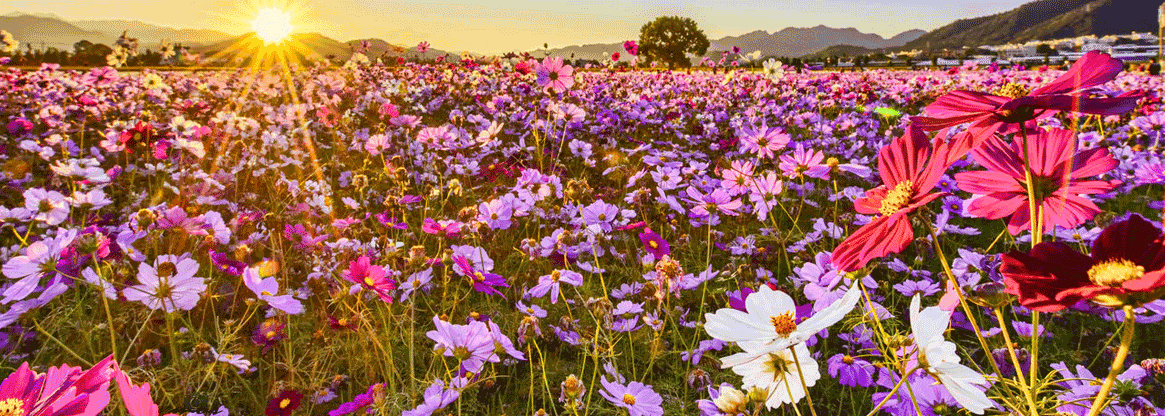
Indoor flower farming is also called floriculture, a branch of horticulture concerned with flowering plants. Floriculture crops include house plants, bedding plants, cut greens, and cut flowers.
Floriculture is a fast-emerging venture on the world scenario growing at a modest annual rate of about 8-10%. Indian floriculture industry is also becoming more aware of its importance.
About Floriculture & Indoor Flower Farming
Why Indoor Flower Farming?
Indoor flower farming is great for many reasons including-
-
It saves space and also we can use space in a better manner.
-
The plants remain unaffected by weather.
-
Indoor vertical farming helps to improve biodiversity by not causing land surface disturbance.
-
Environment friendly, as it removes pollutants from the environment.
-
Improves mood and reduces stress & stress-related depression.
Types of floriculture
-
Cut flowers- Cut flowers are flowers that have been cut together with roots, branched, and leaves for use in bouquets or decorations.
-
Dried flowers- These are the flowers that are used after being dried. These flowers are dried using various preservatives and used for different occasions.
-
Pot plants- These are the flowers and foliage plants grown in pots and are suitable for indoor farming and home gardening.
-
Bedding Plants- In this, seeds are sown indoors in the off-season and transplanted the plants later in the growing season.
-
Hanging Plants- These are annual or perennial flowers or other foliage plants used for decorative purposes. These are suspended by ropes from the ceiling.
Annual & Perennial Flower Plants
Plants that flower and die in one season are annuals, many annuals drop seed that you can collect and grow new plants in the spring. And perennials come back for many seasons. The top portion of perennial dies back in winter, new growth appears the following spring from the same roots.
In short, annuals die in one season and perennials come back.
What is the Process of Indoor Flower Farming?
Start Seed Indoors
If you are starting indoor flower farming, then purchasing all the plants may be expensive. Rather you can plant from seeds. Annuals can be grown easily from sowing seeds indoors but it is somewhat difficult for perennials.
To start seeds indoors, you will need a potting mix, pot or tray (something to plant your seeds in), water to keep it moist. Some seeds may require hardening off (exposing to cool temperatures) before planting.
Water the soil and sow flower seeds on the soil surface and cover them with soil. Put the entire tray or pot in the plastic bag and seal it to prevent the drying of soil during the germination process, so that seeds won’t require further watering till they germinate.
What are the Methods of Indoor Flower Farming?
1. Indoor Flower Farming in Containers
This is the easiest method of indoor flower farming. You will require little space, some containers with drainage holes and water.
Flowers easy to grow with this method are- Geraniums, Petunias, Coral bells, Sedums, Hydrangeas, Begonias, and Coleus, Hibiscus, Orchids, African Violet, Begonias, Jasmine, etc.
2. Indoor Green House Farming
Greenhouse farming allows a gardener to control the climate, no matter what’s happening outside. And with better control, you can grow a wide variety of flowers in the greenhouse. This climate control in the greenhouse can be done with unheated greenhouses or cold frames, but it is the least flexible of greenhouse structures.
A year-round greenhouse will require some complicated systems fitted with heating and cooling systems, ventilation, lights, and shades to cloak plants that require darkness to flower.
If greenhouse farming is new for you, click here for more information.
Flowers easy to grow with this method are- Acalypha, Amazon lily, African lily, Chinese hibiscus, Chenille plant, Abutilon plant, Dutch rose, Salvia, Ferns, etc.
3. Indoor Hydroponic farming
Many flower gardeners consider hydroponic farming as a serious alternative to conventional gardens that grow in the soil. But it is important to realize the unexpected benefits that come from hydroponic farming. If you like quick results, you’ll surely enjoy hydroponic farming.
A hydroponic system is a self-contained growing unit that usually consists of a growing, a water reservoir, and growing media. And it’s on you to add hydroponic nutrients.
Hydroponics has some advantages over conventional soil culture. This system gives you complete control over both nutrient delivery and pH balance. And no tension of weeds, insects, and diseases, and plants grow around 50% faster in comparison to those growing in soil.
If Hydronic farming is new for you, click here for more information about it.
Flowers easy to grow with this method are- Peace lily, Hoya, Flowering jasmine vines, Rose, Orchids, Iris, Freesia, Gerbera, Carnations, etc.











